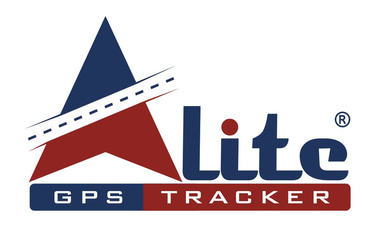Revolutionize Your Tracking Experience – Real Time, Reliable & Effortless tracking solutions
+91 - 7665666631 (Toll Free)
Using GPS Data for Advanced Reporting: Insights That Drive Success
GPS tracking isn’t just about knowing where your vehicles are—it’s about transforming location data into actionable insights. This blog explores how advanced GPS reporting can drive decision-making, optimize fleet efficiency, and enable smart resource management.
Chandra Singh
4/5/20254 min read


Introduction: Beyond Location—The Power of GPS Data
Modern GPS systems go far beyond basic tracking. With advanced analytics and reporting tools, GPS data can be transformed into powerful reports that help fleet operators, business owners, and logistics managers make smarter, data-driven decisions. From driver behavior to fuel usage, maintenance schedules to delivery efficiency—GPS data provides a complete operational view that drives informed action.
1. Route Analysis: Optimize Every Mile
What It Means:
Advanced GPS systems track the exact routes taken by each vehicle, comparing planned vs. actual paths, and identifying inefficiencies such as detours, idle time, or traffic delays.
Benefits in Detail:
Route Optimization: Insights from route reports enable businesses to redesign routes for time and fuel savings.
Performance Benchmarking: Compare delivery times and mileage across routes, drivers, or shifts to identify the most efficient paths.
Operational Planning: Use route trends to better schedule dispatches and deliveries.
Example:
A logistics company compares the routes taken by two drivers delivering to the same location. The route with fewer stops and less traffic becomes the new standard, improving punctuality and reducing fuel usage.
2. Driver Behavior Reports: Encourage Safe Driving
What It Means:
Driver behavior analytics provide insights into speeding, sudden braking, harsh acceleration, sharp cornering, and excessive idling, creating a profile for each driver.
Benefits in Detail:
Improved Safety: Address risky behaviors through training or reward programs to reduce accidents and liability.
Vehicle Longevity: Gentle driving reduces stress on brakes, tyres, and engine components.
Incentive Programs: Use reports to build reward systems for top-performing drivers.
Example:
Weekly reports show a driver frequently brakes harshly in urban zones. With coaching, the driver adopts smoother techniques, improving fuel efficiency and lowering maintenance costs.
3. Trip History Reports: Gain Complete Visibility
What It Means:
These detailed reports summarize every journey including start/end times, total travel duration, distance, routes, idle events, and stop durations.
Benefits in Detail:
Dispute Resolution: Confirm service windows or delivery accuracy with time-stamped records.
Productivity Analysis: Spot patterns in delays, route changes, or unnecessary stoppages.
Asset Utilization: Identify underused or overused vehicles and optimize assignments accordingly.
Example:
A food distribution company uses trip data to verify on-time deliveries to vendors and adjust shift timings based on traffic data from previous trips.
4. Maintenance and Fuel Reports: Cut Hidden Costs
What It Means:
By analyzing usage patterns, mileage, engine hours, and fuel logs, these reports alert managers to upcoming maintenance and fuel anomalies.
Benefits in Detail:
Preventive Maintenance: Schedule service based on real vehicle usage, reducing breakdown risks.
Fuel Efficiency: Identify inefficiencies like idling, detours, or poor driving affecting fuel economy.
Trend Monitoring: Spot changes in fuel behavior to address theft, leaks, or misuse.
Example:
A fleet of delivery vans starts using route-based fuel reports and identifies three vehicles consuming 30% more fuel. After inspection, two had tyre pressure issues and one needed engine tuning.
5. Geofencing Reports: Monitor Entry & Exit Logs
What It Means:
Geofencing allows virtual boundaries around key locations (warehouses, customer sites, restricted zones). Reports log vehicle entries, exits, and time spent inside.
Benefits in Detail:
Time Tracking: Evaluate service time spent at each customer location.
Security Control: Monitor movements in high-value or sensitive areas.
Compliance: Ensure adherence to routes, schedules, and designated territories.
Example:
A bus service provider uses geofencing to track time at terminals and stops. Delays are flagged, helping improve on-time performance.
6. Vehicle Health Monitoring: Stay Ahead of Breakdowns
What It Means:
GPS systems integrated with onboard diagnostics (OBD) deliver live data on engine health, fault codes, battery status, and coolant temperature.
Benefits in Detail:
Real-Time Alerts: Managers are instantly notified of engine issues, overheating, or electrical faults.
Downtime Prevention: Small issues can be addressed before they escalate.
Maintenance Planning: Combine health data with usage patterns for smarter servicing schedules.
Example:
A commercial fleet receives a warning about coolant temperature. Immediate action avoids engine seizure and costly repair.
7. Document & Compliance Reports: Never Miss a Deadline
What It Means:
Manage and get reminders for vehicle-related documents such as PUC, permits, insurance, tax, and driver licenses.
Benefits in Detail:
Legal Compliance: Prevent penalties and ensure uninterrupted service.
Timely Renewals: Get alerts days or weeks in advance.
Audit Readiness: Present digital records during compliance audits.
Example:
A fleet manager gets a system alert that five trucks have insurance renewals due in 10 days, prompting timely renewal and zero downtime.
8. Driver & Vehicle Assignment Reports: Track Utilization
What It Means:
Assign drivers to specific vehicles and track performance, shift records, and usage.
Benefits in Detail:
Clear Responsibility: Avoid confusion in damage, violations, or theft cases.
Utilization Trends: Monitor how often each vehicle and driver is used.
Driver History: Keep logs for driver license expiry, penalties, and medical checks.
Example:
A logistics company tracks which drivers consistently return vehicles late or with damage, allowing HR to take corrective action.
9. Tyre & Component Tracking: Micro-Level Control
What It Means:
Keep digital logs of tyre brand, serial number, tread depth, fitment date, and position. Track usage and wear patterns.
Benefits in Detail:
Maximized Lifespan: Timely rotation and condition checks reduce blowouts.
Preventive Replacements: Replace parts before they cause breakdowns.
Component-Level Analytics: Track urea/ad-blue usage in BS6 vehicles for emission control.
Example:
Fleet operators track tyre rotation cycles and find rear tyres wear faster. Adjustments improve balance and longevity.
10. Dashcam & Video Reports: Visual Proof of Activity
What It Means:
Dashcams integrated with GPS tracking provide real-time video streaming and event-based recording (e.g., sudden braking, impact).
Benefits in Detail:
Incident Investigation: Footage helps understand accidents or thefts.
Compliance Checks: Monitor seatbelt usage, mobile phone use, or unauthorized stops.
Customer Disputes: Provide video proof of delivery or service.
Example:
A customer claims they didn’t receive a parcel. Dashcam footage shows successful delivery, closing the dispute.
Conclusion: Data That Drives Smarter Decisions
GPS technology, when paired with robust reporting systems, becomes a powerful management tool. Whether it's improving driver behavior, optimizing routes, maintaining compliance, or reducing costs—every data point serves a purpose.
Advanced GPS reporting transforms operational complexity into organized, actionable intelligence—fueling productivity, safety, and customer satisfaction.
🚀 Empower Your Fleet with Alite GPS Trackers Turn GPS data into powerful reports and insights that drive operational excellence.
👉 Book a free consultation today! 📞 Toll-Free: 7665666631 📧 Email: sales@alitegps.com
Empowering Your Journey with Smart Tracking!
Fleet or Personal, We Track It All – Get in Touch
support@alitegps.com
Srag India Info Solutions © 2025. All rights reserved.
Info@alitegps.com
